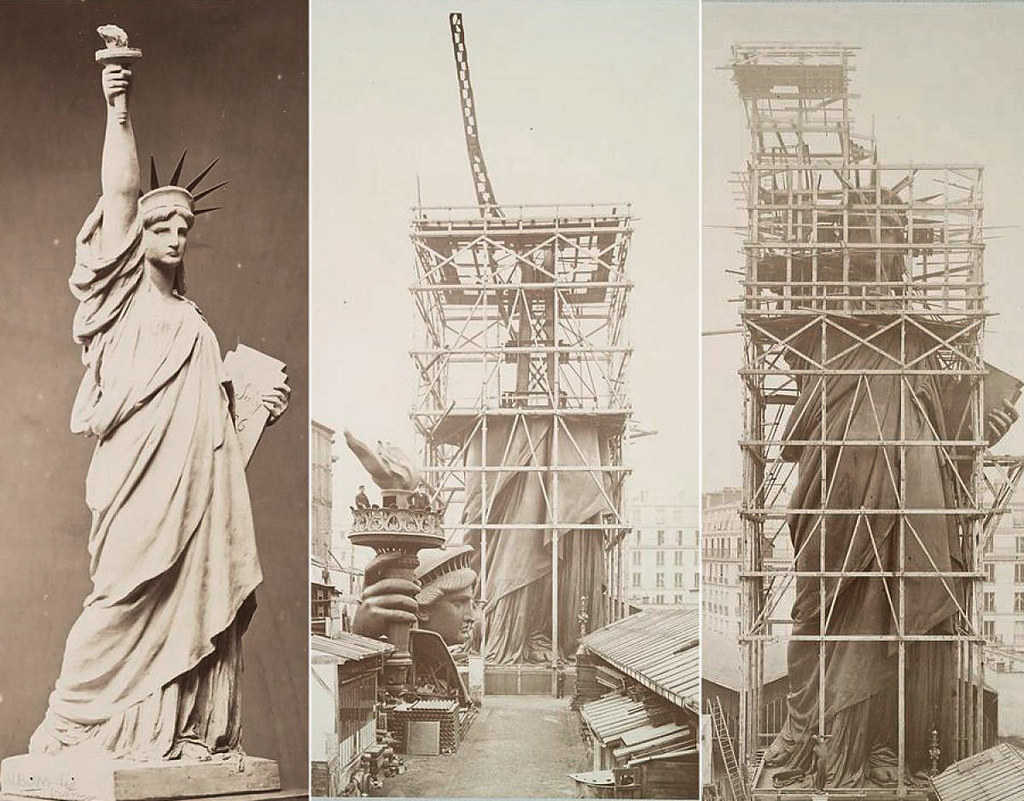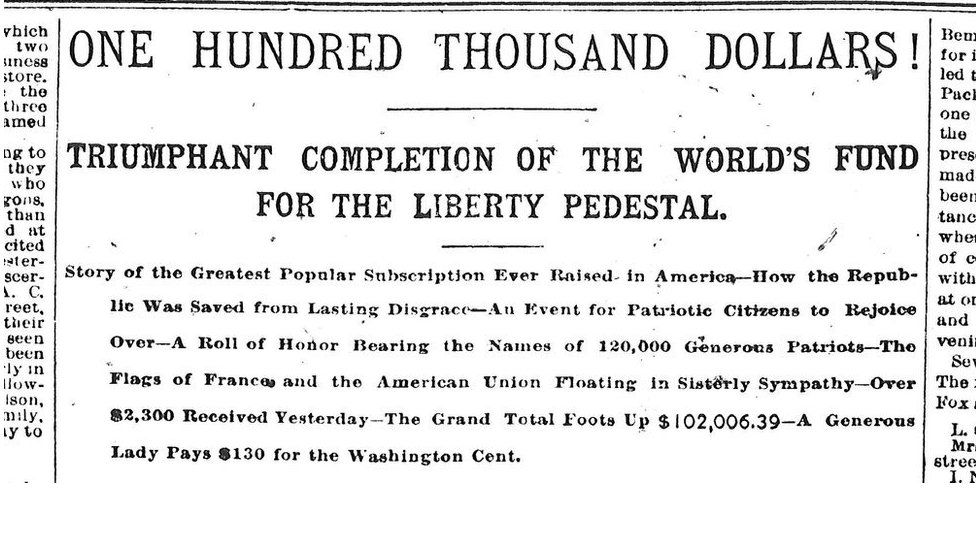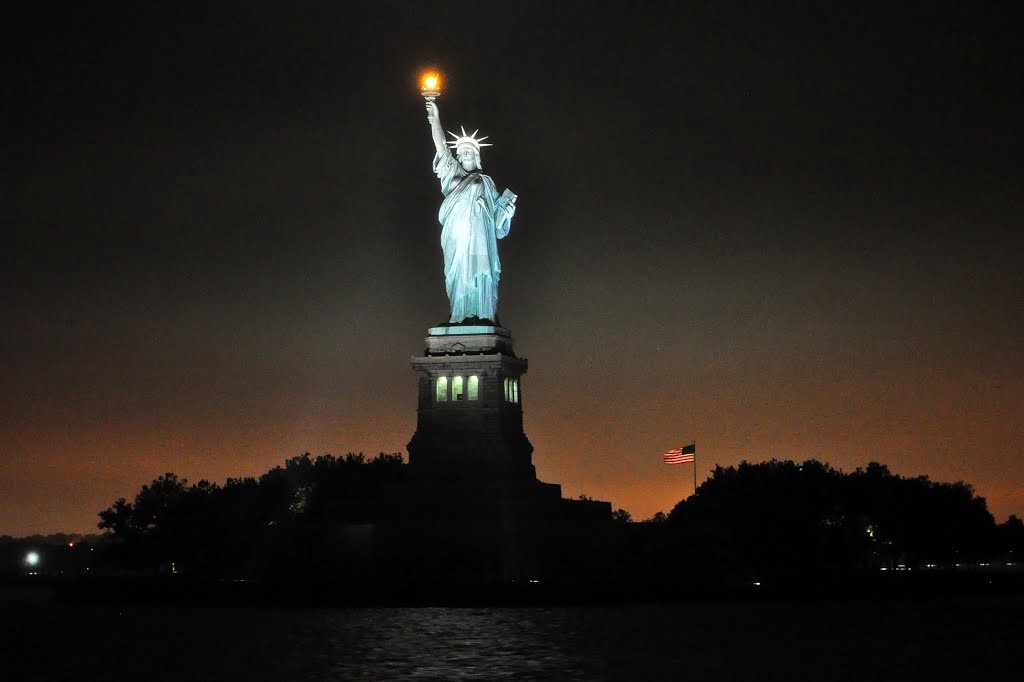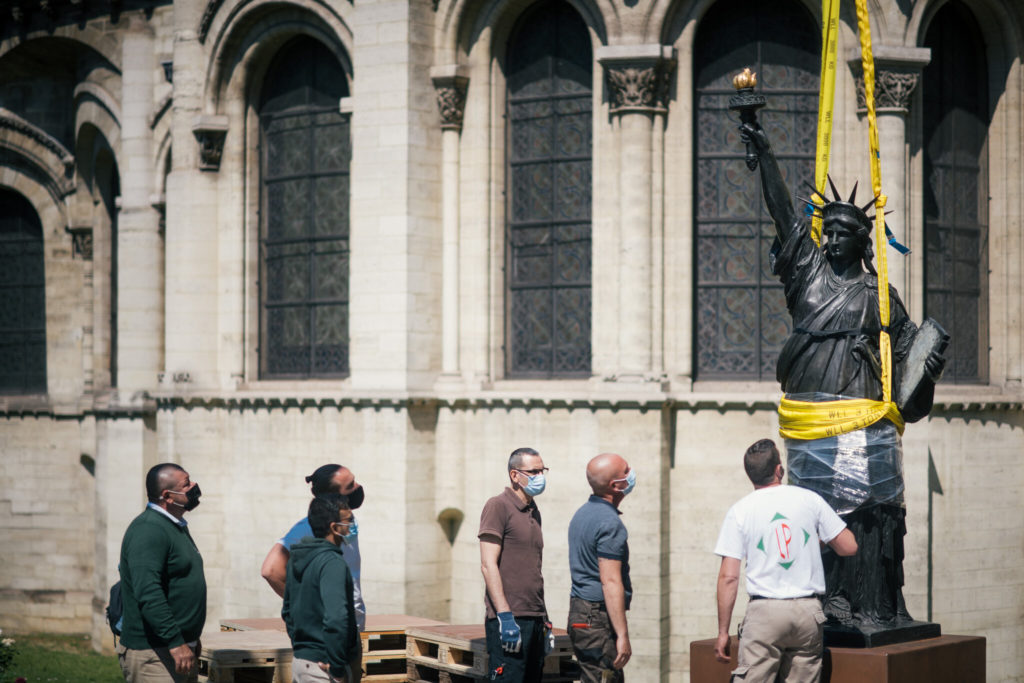One of the most well-known monuments in the world is the Statue of Liberty. Anyone visiting the United States, New York City can see Lady Liberty, but not everyone is aware that she has her own mysteries. One of them is a lady who may or may not be a lady at all! Well, in this post we will tell you the hidden facts about the Statue of Liberty.
Table of Contents
Toggle9 Hidden facts about the Statue of Liberty
1. The Statue of Liberty was once split into pieces
It’s difficult to imagine, but the Statue of Liberty arrived in almost 300 copper parts from France on June 17, 1885. On the French ship Isère, the valuable cargo was transported in 214 containers. The torch-bearing arm, however, was not present. It stood in Madison Square Park for six years to gather funds for the pedestal’s sponsorship. 200,000 people gathered to welcome the statue to the United States when the ship transporting it landed. President Grover Cleveland presided over the official dedication ceremony, which took place on October 28, 1886.

First, French sculptor, Frédéric Auguste Bartholdi raised funds in his country to build the statue. It wasn’t actually sponsored by the local government. When it was finished, the sculptor offered it as a gift to the US on one condition: they would build a pedestal for it. The federal government didn’t like the idea, so the status of the statue was unclear for a few years. Then, American newspaper magnate Joseph Pulitzer stepped in. He basically started one of the first massive crowd-funding campaigns in history, promising every contributor an honorary shout-out in his newspapers. Even though 80% of the donations were small ones from middle-class citizens, Pulitzer managed to collect the necessary amount from over 120,000 donors. By the way, the famous sonnet “The New Colossus”, which can still be found on a bronze plaque inside the Statue, was also part of the fund-raising campaign.
2. Fund raising campaign for the Statue of Liberty
First, French sculptor, Frédéric Auguste Bartholdi raised funds in his country to build the statue. It wasn’t actually sponsored by the local government. When it was finished, the sculptor offered it as a gift to the US on one condition: they would build a pedestal for it. The federal government didn’t like the idea, so the status of the statue was unclear for a few years. Then, American newspaper magnate Joseph Pulitzer stepped in. He basically started one of the first massive crowd-funding campaigns in history, promising every contributor an honorary shout-out in his newspapers. Even though 80% of the donations were small ones from middle-class citizens, Pulitzer managed to collect the necessary amount from over 120,000 donors. By the way, the famous sonnet “The New Colossus”, which can still be found on a bronze plaque inside the Statue, was also part of the fund-raising campaign.

3. The Statue of Liberty wasn’t always green
Because the Statue of Liberty is composed of copper, it was once the color of a penny. According to the New-York Historical Society, oxidation caused it to turn totally green by 1920. Once upon a time, it was half brown, half green. The new color survived the restoration, and the coating, known as patina, is said to last forever.

4. It used to serve as a lighthouse
The statue was originally supposed to serve as a lighthouse for ships sailing into New York Harbor. And, two years after it arrived in the US, it actually became one. For 16 years, the Statue’s lamp served as a beacon. But it wasn’t bright enough, and, running out of ideas to fix it, Bartholdi offered to cover the entire statue in gold to make it brighter. Congress said no to that idea since it would’ve been crazy expensive.

5. It's all about the number seven
The Statue of Liberty has seven spikes on its crown, which represent worldwide liberty across the seven oceans and continents. The number 7 is also referenced in the number of windows in its head – there are 25 of them, which adds up to seven when the numbers are added together. The torch is surrounded by 16 leaves, and the monument is 151 feet tall. The total of those two digits is also seven. That number must have meant a lot to the Statue’s creators.

6. The construction supporting the Statue was designed by Gustave Eiffel
The pedestal of the Statue of Liberty was built in old Fort Wood on Liberty Island. It currently hosts museums that show the history of the Statue with old photographs, videos, recorded oral stories, and the original torch Lady Liberty was holding in 1886. Famous engineer Alexander Gustave Eiffel helped design the steel internal framework to keep the statue stable. It’s strong enough to withstand around 600 bolts of lightning a year. When the wind is high, the Statue can sway by around 3 inches, and its torch – about 5 inches. 354 steps lead up to the crown of Lady Liberty, which is open to visitors; but the torch is off-limits.

7. It might have masonic ties
There’s a popular theory claiming that the Statue of Liberty was originally supposed to be dressed as an Arab peasant woman and stand at the southern opening of Egypt’s Suez Canal. The ruler of Egypt couldn’t afford it, so Bartholdi redesigned it, giving it a different dress and new name, and sent it as a gift to the American people to celebrate the anniversary of the American Revolution. So what does that have to do with the masons?
Well, Bartholdi himself was a freemason. He represented the French Grand Orient Temple Masons, hence his interest in Egypt. He supposedly wanted to put the statue there to symbolize “the Orient showing the way”. The torch Lady Liberty is holding is an important symbol in Masonic culture as the “Torch of Enlightenment” or the “Flaming Torch of Reason”. The masons also took part in the cornerstone laying ceremony in 1884, and the grand master, William A. Brodie, presided over it in the company of grand lodge members.
8. The face of the Statue of Liberty could be that of a man
When you think of the Statue of Liberty, do you see it as she? Most people are positive it’s a representation of the Roman goddess of freedom, Libertas. The widely accepted story is that Bartholdi modeled her face after his mother. Author and journalist, Elizabeth Mitchell, however, claims that the sculptor actually used his brother’s face as a model! As she was studying the photographs of Bartholdi’s family, the writer noticed his mother had a different eyebrow shape, thinner nose and lips, and a smaller mouth. Then, she pointed out the striking resemblance between the sculptor’s brother in his adult years and the statue. Because of his mental health condition, Bartholdi’s brother spent years at the hospital, and Frederic would spend hours watching him. That could’ve helped him recreate his face in every detail.
Another theory was presented by French writer Nathalie Salmon, who claims Lady Liberty was modeled after her ancestor Sarah Salmon. According to her, Bartholdi found Sarah’s features particularly beautiful. Even though she had immigrated to the United States, she and her husband visited the sculptor at his studio when they briefly went back to Paris in 1875. He could’ve used that opportunity to draw Sarah, and later used those images as a model.
9. There's more than one Statue of Liberty
I’m not talking about its plastic souvenir versions or the one on Las Vegas Boulevard. You can find a smaller Statue of Liberty, which was the original model for its big sister, in the Jardin du Luxembourg in Paris. It’s been there since 1906 after Bartholdi gave it to the Luxembourg museum for the World’s Fair of 1900. Another version of the iconic monument was erected on an island in the Seine River to celebrate the 100th anniversary of the French revolution in 1889. It has two dates on it – July 4, 1776, and July 14, 1789, symbolizing the friendship of the two nations, and the importance of revolution.

There’s also a life-size copy of the torch on the Pont de l’alma in Paris. People from around the world sponsored its construction as a symbol of Franco-American friendship. It was set not far from the Eiffel Tower on the 100th anniversary of the Statue’s dedication. The Statue, of course, has also inspired numerous public and modern art projects, and one of its most famous replicas greets the visitors of a toy store in Times Square.
Well, these are some interesting facts about the Statue of Liberty. We hope you enjoyed the post. For more global facts, visit our website.


I found your weblog website on google and verify a couple of of your early posts. Proceed to maintain up the very good operate. I just further up your RSS feed to my MSN News Reader. Searching for forward to studying more from you in a while!…
Its like you read my mind! You seem to grasp a lot about this, such as you wrote the book in it or something. I feel that you simply can do with a few p.c. to force the message house a bit, but other than that, this is great blog. A great read. I will definitely be back.
As a Newbie, I am continuously browsing online for articles that can benefit me. Thank you